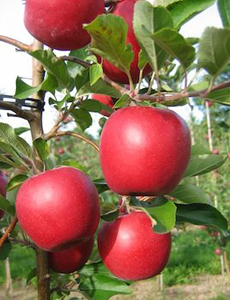TRENDS: Is My Name Sexy? I’m An Apple!
 Do you think I’m sexy? Photo courtesy Cornell University. |
It’s probably not a surprise, but a food with a sexy name is more appealing to consumers. The right name could command a much sweeter price for farmers, as research for a new apple name has shown. Apple names generally fall into three categories: |
|
|
The researchers tested the new Cornell apple under three names: sincere “Williams,” sophisticated “Burgundy Beauty” and exciting “Flavor Haven.” With the first two names, the average bid for the new apple was 12% higher than the average for four established apple varieties: Empire, Fuji, Honeycrisp and Piñata. With the “exciting” Flavor Haven name, the average bid for the apple jumped to 27% more than the other varieties. As new, patented varieties of apples hit shelves, they will often sell for a premium—and not just because of the sexy name. They’re also more expensive to grow, as farmers have to buy licenses from the developers to grow them. There is a fairly substantial upfront fee—it could be $1,500 an acre to license—and then a royalty is paid on each box of fruit sold. Historically, the agriculture schools of public universities developed new apple breeds and released them to the public. But in 1980, the Bayh-Dole Act gave universities the right to retain the intellectual property rights for their research. So the next time you look at the variation in apple prices: There’s more than meets the eye.
|
||


